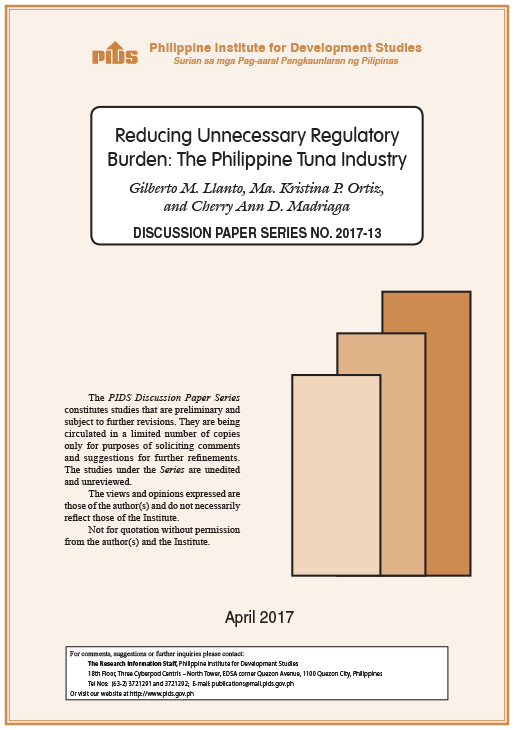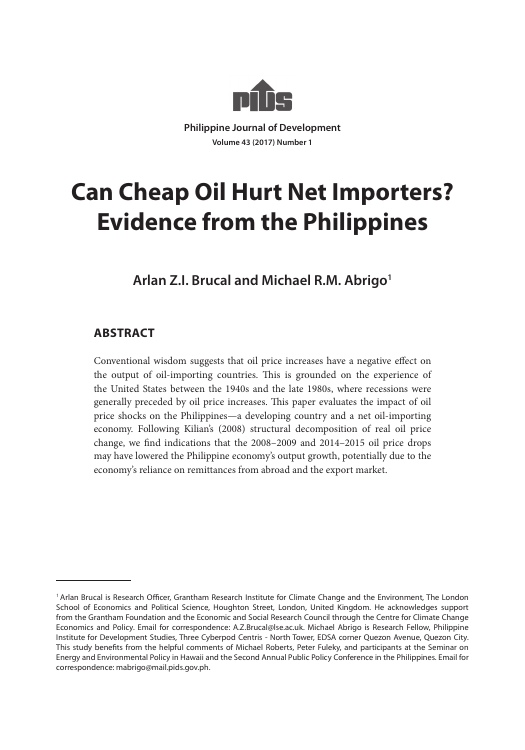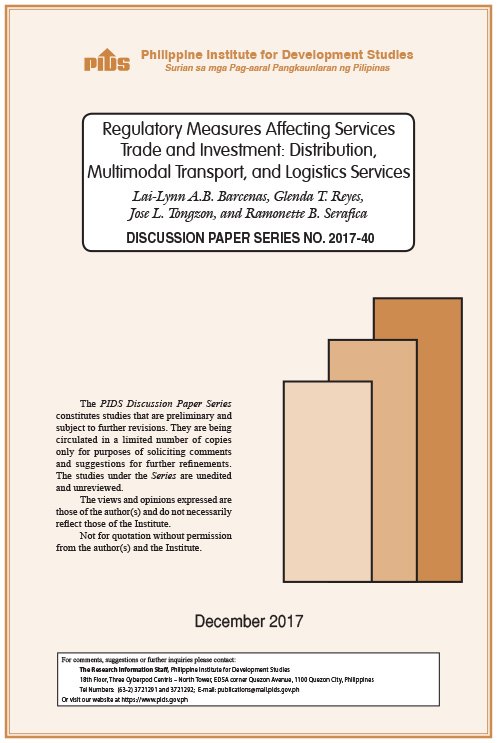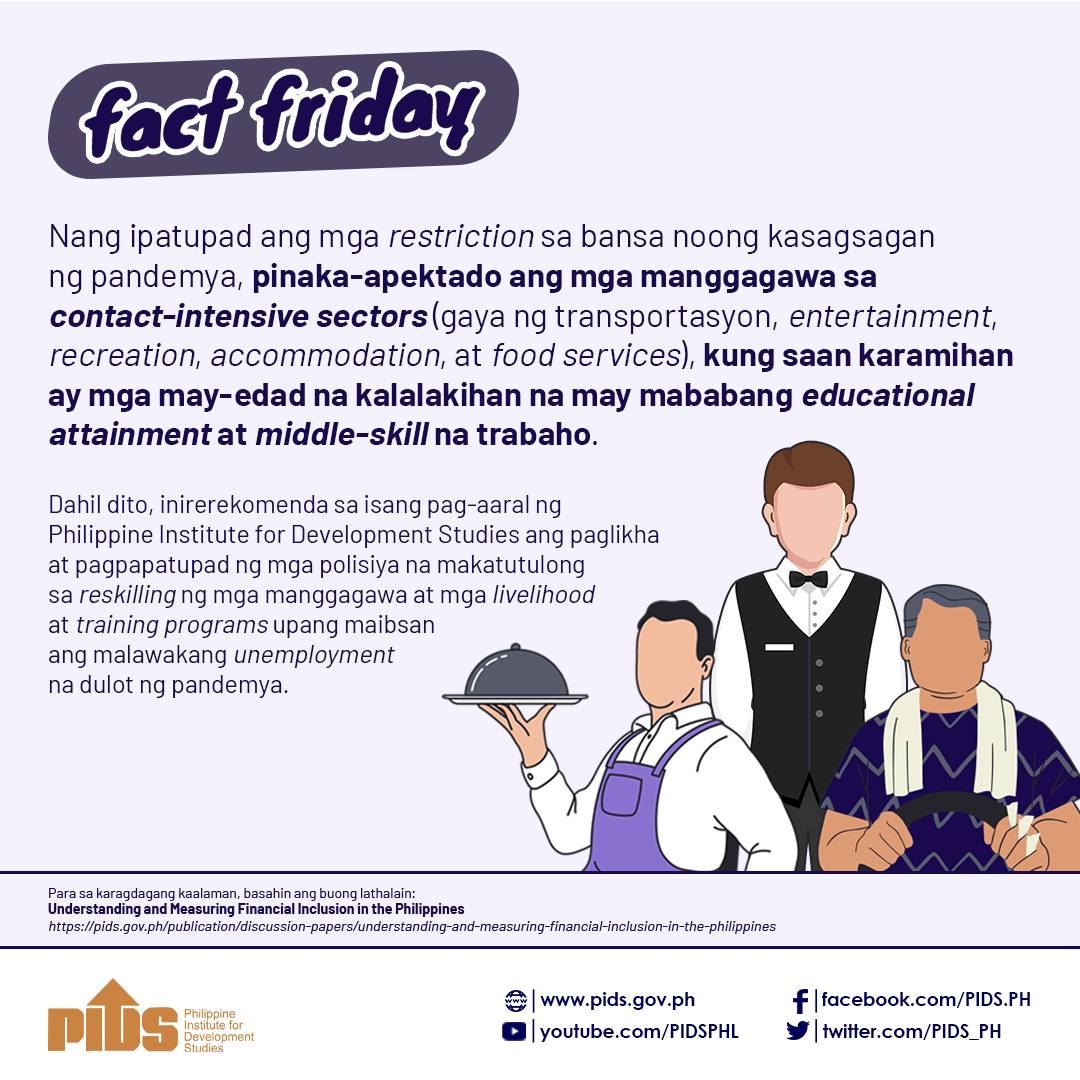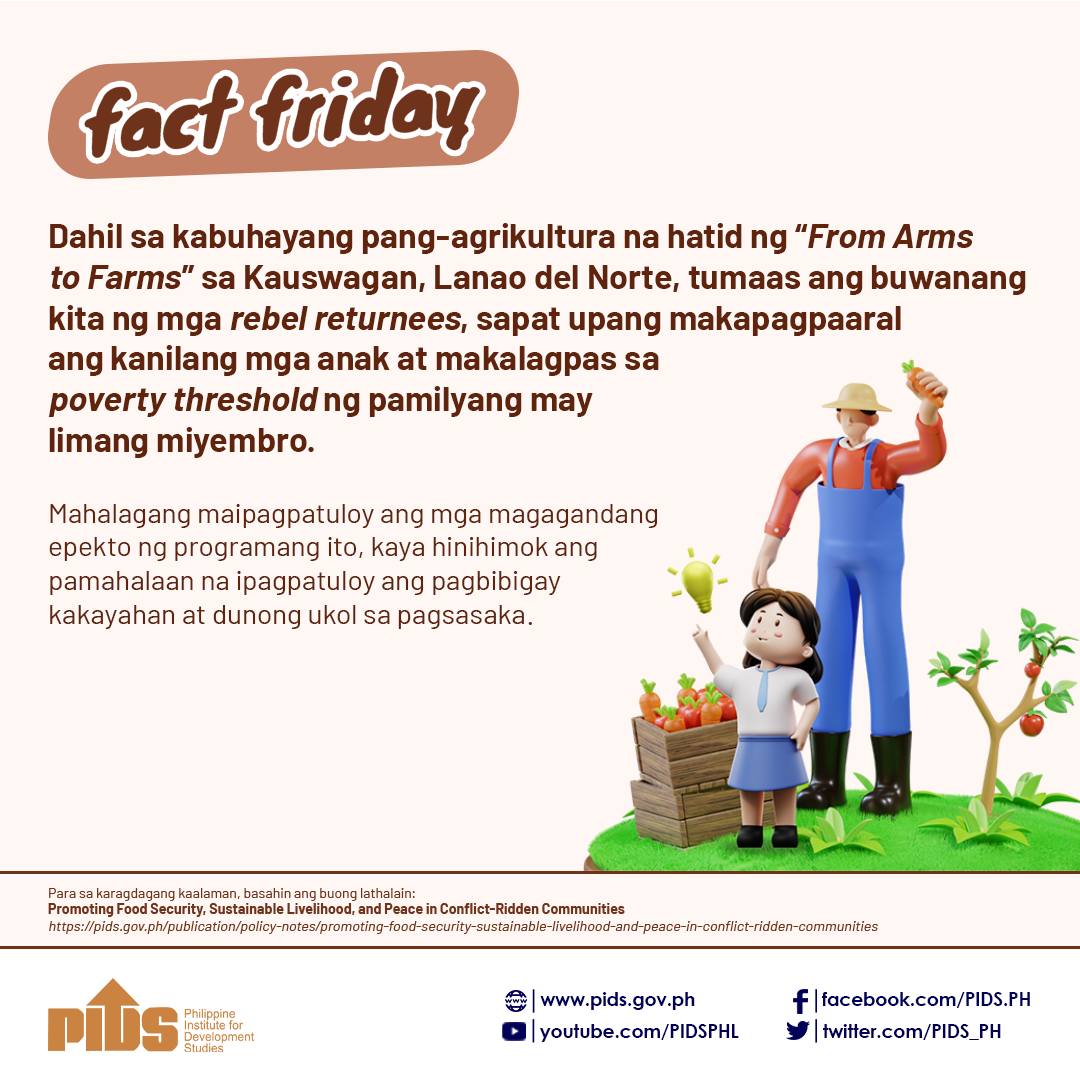
State think tank Philippine Institute for Development Studies (PIDS) presented a framework that would help the government in assessing competition issues and in measuring the impacts of competition reforms on consumers, businesses, and the economy as a whole. Called the Framework for Competition Reform (FCR), this methodology is the product of the Competition Reforms in Key Markets for Enhancing Social and Economic Welfare (CREW) project conducted by the Institute in partnership with New Delhi-based Consumer Unity and Trust (CUTS) International and the Action for Economic Reforms (AER).
Using the FCR, the CREW project initially looked at competition issues and the impact of competition reforms in the country’s rice and bus transport sectors. According to PIDS President Gilberto Llanto, the same framework can be applied in assessing market competition in other sectors.
"Learnings from this project would be useful to policymakers, researchers, and other stakeholders in tackling competition issues and in measuring the impact of competition reforms in other sectors such as retail trade, air transport, as well as banking and finance," Llanto explained during a workshop held last March 2 at the PIDS office in Quezon City.
The completion of the CREW project is timely given that the country is in the initial stage of implementing the Philippine Competition Act of 2015, which took 25 years before passing the legislative mill. The end goal of this law is to benefit consumers with more choices and lower prices, which are products of market competition.
According to CUTS International Senior Research Associate Neha Tomar, the CREW project is aimed at fixing the "gap between knowing the competition law and implementing the same" by providing policymakers and practitioners a robust evidence-based methodology to understand the impact and value of reforms. Thus, the FCR is designed to enable practitioners to map out the variables for producer and consumer welfare, and determine the impact of reforms.
The CREW project was implemented in Ghana, India, Philippines, and Zambia, and studied two basic sectors--staple food and passenger transport.
In assessing the state of competition in the rice sector, the PIDS project team looked into the major reforms introduced by government in the sector in view of the imminent abolition of the quantitative restriction (QR) on rice importation. The study specifically provided evidence of the impact of QR on the domestic price of rice and on consumer welfare, and did an evidence-based assessment of options for protecting the interest of rice farmers. These include a proposal to provide adjustment package upon the abolition of QR in 2017, which is a transfer scheme over and above the existing production support provided by government.
In 1995, the Philippines was granted special treatment in rice, which allows the country to set a ceiling on the amount of rice to be imported over a given period. The ceiling is determined by the state-run National Food Authority, which has the import monopoly for rice.
PIDS Senior Research Fellow and CREW Project Director Roehlano Briones cautioned that the removal of the QR on rice will result in massive fall in domestic rice prices, hence, it is imperative to provide farmers a measure for income support.
"The inevitable transition to a more open rice trade regime should be accompanied by safety nets for smallholders suffering from intensified competition from imports. We have evaluated a compensatory transfer scheme combined with a 35-percent tariff equivalent as a possible support scheme once special treatment is removed," Briones explained.
For the bus transport sector, the PIDS study looked at options for consolidating buses as part of a strategy to decongest Metro Manila’s busiest thoroughfare--the Epifanio De Los Santos Avenue or EDSA. These options include consolidating bus operators into a consortium to bid the right to operate on a specific route and converting the buses into bus rapid transit systems. In her presentation, PIDS Consultant Hope Gerochi also enumerated the benefits, costs, and risks involved in the consolidation strategy, as well as implications for fair competition, compared to major alternative strategies.
Assessments of the state of competition in other industries in the country, such as airline, banking and finance, and retail trade, were also presented during the forum.
In her discussion, REID Foundation President Cherry Lyn Rodolfo, enumerated the positive impacts of competition reforms on the airline industry. These policies include the liberalization of air service agreements, which allowed Cebu Pacific to enter the Hong Kong and Singapore markets, and the passage of Pocket Open Skies, which opened up secondary gateways to international flights in 2011, and the recent ratification of ASEAN Open Skies, which allows airlines from all 10 ASEAN member-states to fly freely throughout the region.
According to Rodolfo, although the Philippines is "still not at the same level of growth as Indonesia in terms of passenger carrying capacity of airlines, growth has been positive since 2009."
This growth has been achieved despite major barriers such as poor infrastructure and congestion at the country’s main airport, Ninoy Aquino International Airport, which prevent international airlines from entering the Philippine market.
Rodolfo also enumerated some competition issues in the airline industry such as market definition issues, drip pricing, impacts of code share arrangements, mergers and alliances, lack of access to essential inputs such as slots and check-in counters, and weak consumer and users group.
"These are issues that we believe we have to contend with and try to address because they are limiting the positive impact that the air transport can make," said Rodolfo.
She insisted that solutions have to be holistic and long term. The airline industry would benefit a lot, she said, from implementing changes, such as having a new organization installed to oversee functions that should no longer be under the Civil Aviation Authority of the Philippines (CAAP). She noted that CAAP’s primary concern should be the safety of consumers.
On the part of the banking industry, Dr. Alvin Ang of the Ateneo de Manila University’s Department of Economics spoke about the sector’s shortcomings in balancing efficiency, financial stability, and access of firms and households to financial services.
"The banking sector faces a lot of competition problems like having high barriers to entry and exit. Lowering these barriers would generally lead to greater product differentiation, lower costs of financial intermediation, more access to financial services, and enhancing stability," Ang explained.
Ang also underscored the problem of private banks disproportionately outranking the market share of thrift and rural banks. According to Ang, the top five banks in the country account for 54 percent of the total assets of the banking sector. On top of these, the banking sector is also concerned with improving financial inclusion and financial literacy.
Ang commented that it is necessary to undertake reforms to liberalize the financial markets not just to promote the domestic banking industry but also to prepare Philippine banks to participate and compete in the integrated ASEAN regional financial system. Currently, no Philippine bank has qualified to be an ASEAN bank, shutting them out from accessing a larger market.
"Philippine banks are among the smallest in the ASEAN in terms of asset. The Development Bank of Singapore, for example, is bigger than the entire Philippine banking system," he added.
Lastly, Dr. Roberto de Vera from the University of Asia and the Pacific enumerated the competition concerns of the retail trade sector, including the need to develop and empower small and medium enterprises for a more inclusive market and more vibrant competition.
CUTS Associate Director Rijit Sengupta wrapped up the seminar affirming the importance of evidence-based research behind every competition-related change. "The Philippines has shown great interest and strong intent in solving its competition issues. Thus, the Philippine Competition Commission will find no shortage in partners from the academe, industries, regulatory bodies, and civil society to convey the message that competition will be promoted in every level of the economy without fear or favor," he concluded. ###
Using the FCR, the CREW project initially looked at competition issues and the impact of competition reforms in the country’s rice and bus transport sectors. According to PIDS President Gilberto Llanto, the same framework can be applied in assessing market competition in other sectors.
"Learnings from this project would be useful to policymakers, researchers, and other stakeholders in tackling competition issues and in measuring the impact of competition reforms in other sectors such as retail trade, air transport, as well as banking and finance," Llanto explained during a workshop held last March 2 at the PIDS office in Quezon City.
The completion of the CREW project is timely given that the country is in the initial stage of implementing the Philippine Competition Act of 2015, which took 25 years before passing the legislative mill. The end goal of this law is to benefit consumers with more choices and lower prices, which are products of market competition.
According to CUTS International Senior Research Associate Neha Tomar, the CREW project is aimed at fixing the "gap between knowing the competition law and implementing the same" by providing policymakers and practitioners a robust evidence-based methodology to understand the impact and value of reforms. Thus, the FCR is designed to enable practitioners to map out the variables for producer and consumer welfare, and determine the impact of reforms.
The CREW project was implemented in Ghana, India, Philippines, and Zambia, and studied two basic sectors--staple food and passenger transport.
In assessing the state of competition in the rice sector, the PIDS project team looked into the major reforms introduced by government in the sector in view of the imminent abolition of the quantitative restriction (QR) on rice importation. The study specifically provided evidence of the impact of QR on the domestic price of rice and on consumer welfare, and did an evidence-based assessment of options for protecting the interest of rice farmers. These include a proposal to provide adjustment package upon the abolition of QR in 2017, which is a transfer scheme over and above the existing production support provided by government.
In 1995, the Philippines was granted special treatment in rice, which allows the country to set a ceiling on the amount of rice to be imported over a given period. The ceiling is determined by the state-run National Food Authority, which has the import monopoly for rice.
PIDS Senior Research Fellow and CREW Project Director Roehlano Briones cautioned that the removal of the QR on rice will result in massive fall in domestic rice prices, hence, it is imperative to provide farmers a measure for income support.
"The inevitable transition to a more open rice trade regime should be accompanied by safety nets for smallholders suffering from intensified competition from imports. We have evaluated a compensatory transfer scheme combined with a 35-percent tariff equivalent as a possible support scheme once special treatment is removed," Briones explained.
For the bus transport sector, the PIDS study looked at options for consolidating buses as part of a strategy to decongest Metro Manila’s busiest thoroughfare--the Epifanio De Los Santos Avenue or EDSA. These options include consolidating bus operators into a consortium to bid the right to operate on a specific route and converting the buses into bus rapid transit systems. In her presentation, PIDS Consultant Hope Gerochi also enumerated the benefits, costs, and risks involved in the consolidation strategy, as well as implications for fair competition, compared to major alternative strategies.
Assessments of the state of competition in other industries in the country, such as airline, banking and finance, and retail trade, were also presented during the forum.
In her discussion, REID Foundation President Cherry Lyn Rodolfo, enumerated the positive impacts of competition reforms on the airline industry. These policies include the liberalization of air service agreements, which allowed Cebu Pacific to enter the Hong Kong and Singapore markets, and the passage of Pocket Open Skies, which opened up secondary gateways to international flights in 2011, and the recent ratification of ASEAN Open Skies, which allows airlines from all 10 ASEAN member-states to fly freely throughout the region.
According to Rodolfo, although the Philippines is "still not at the same level of growth as Indonesia in terms of passenger carrying capacity of airlines, growth has been positive since 2009."
This growth has been achieved despite major barriers such as poor infrastructure and congestion at the country’s main airport, Ninoy Aquino International Airport, which prevent international airlines from entering the Philippine market.
Rodolfo also enumerated some competition issues in the airline industry such as market definition issues, drip pricing, impacts of code share arrangements, mergers and alliances, lack of access to essential inputs such as slots and check-in counters, and weak consumer and users group.
"These are issues that we believe we have to contend with and try to address because they are limiting the positive impact that the air transport can make," said Rodolfo.
She insisted that solutions have to be holistic and long term. The airline industry would benefit a lot, she said, from implementing changes, such as having a new organization installed to oversee functions that should no longer be under the Civil Aviation Authority of the Philippines (CAAP). She noted that CAAP’s primary concern should be the safety of consumers.
On the part of the banking industry, Dr. Alvin Ang of the Ateneo de Manila University’s Department of Economics spoke about the sector’s shortcomings in balancing efficiency, financial stability, and access of firms and households to financial services.
"The banking sector faces a lot of competition problems like having high barriers to entry and exit. Lowering these barriers would generally lead to greater product differentiation, lower costs of financial intermediation, more access to financial services, and enhancing stability," Ang explained.
Ang also underscored the problem of private banks disproportionately outranking the market share of thrift and rural banks. According to Ang, the top five banks in the country account for 54 percent of the total assets of the banking sector. On top of these, the banking sector is also concerned with improving financial inclusion and financial literacy.
Ang commented that it is necessary to undertake reforms to liberalize the financial markets not just to promote the domestic banking industry but also to prepare Philippine banks to participate and compete in the integrated ASEAN regional financial system. Currently, no Philippine bank has qualified to be an ASEAN bank, shutting them out from accessing a larger market.
"Philippine banks are among the smallest in the ASEAN in terms of asset. The Development Bank of Singapore, for example, is bigger than the entire Philippine banking system," he added.
Lastly, Dr. Roberto de Vera from the University of Asia and the Pacific enumerated the competition concerns of the retail trade sector, including the need to develop and empower small and medium enterprises for a more inclusive market and more vibrant competition.
CUTS Associate Director Rijit Sengupta wrapped up the seminar affirming the importance of evidence-based research behind every competition-related change. "The Philippines has shown great interest and strong intent in solving its competition issues. Thus, the Philippine Competition Commission will find no shortage in partners from the academe, industries, regulatory bodies, and civil society to convey the message that competition will be promoted in every level of the economy without fear or favor," he concluded. ###

